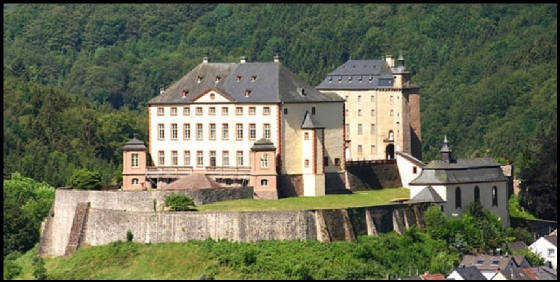Gerhard was likely a younger son of Dietrich,
margrave of Are (Altenahr) and Agnes of Malberg. He apparently received the castle of his mother's family. He was married
and had two known sons. He entered the order after the death of his wife, at an unknown time before 1239. He is first mentioned
in 1239 as a witness, as frere Girard de Mauberge. In 1240 he signs as Marshall of the order in a treaty with the
Knights Hospitaller. At this time, Pope Gregory IX was planning to incorporate the Teutonic Order into the Knights Hospitaller,
and Gerhard's career in the order was likely furthered by his good connections to the Hospitaller order. He was most likely
elected Grand Master in late 1241. He is recorded as holding this office in February 1242, when he represented Frederick
II at the Roman curia. Frederick II dispatched the new Grand Master, the Archbishop of Bari, and the Magister Roger Porcastrello
to pressure the papal conclave to elect Otto of St. Nicholas as pope, but Pope Celestine IV was chosen instead.

During 1243, he seems to have been a follower of Frederick II and his son
Conrad IV in their conflict with the new pope Innocent IV, sent by Frederick as an ambassador to the pope to negotiate a
reconciliation in June 1243. The pope gave Gerhard an apostolic ring, representing Prussia as a papal fief of the knights
in return for annual tribute from the Order. The knights fought against Świętopełk II of Pomerania during
von Malberg's service. In late 1243 or early 1244
(before 7 July 1244), Gerhard resigned as Grand Master. The reasons for his resignation are unclear, but he seems to have
been accused of poor leadership and mismanagement. Innocent IV permitted Gerhard to enter the Knights Templar, but there
is no evidence that Gerhard made use of this.
